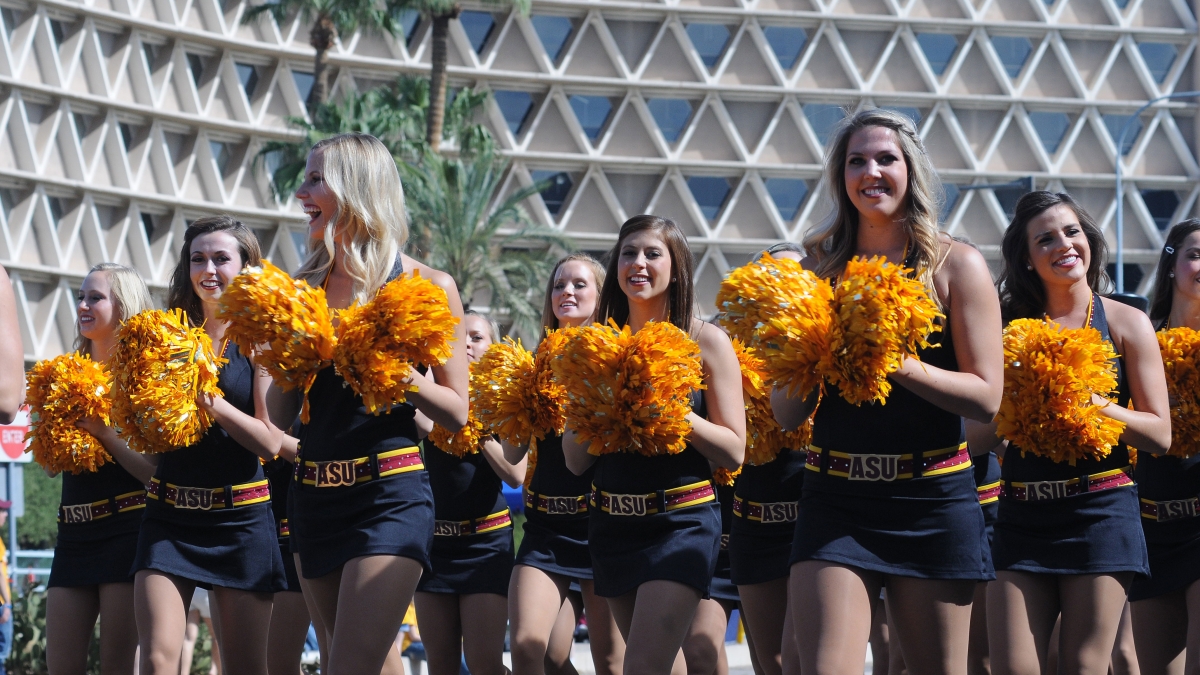Sidelining stereotypes, but not spirit, for Super Bowl XLVI

This Super Bowl Sunday, while the New England Patriots go head-to-head with the New York Giants, cut your eyes away briefly to the sidelines to consider the cheerleaders. Who are these women wielding pom-poms?
The Patriots cheerleaders are among nearly 4 million cheerleaders in the United States – many of whom pursue professional degrees in science, technology, engineering and mathematics (STEM), as well as health sciences.
Surprised? Stereotypes affect us all. Perhaps, this is part of the reason why: When Patriots cheerleaders rouse the crowd for the red, white and blue on Feb. 5, the Giants sidelines will be empty. Giants co-owner John Mara, quoted by the New York Times in 2010, defended the team's elimination of its cheerleaders. “Philosophically we have always had issues with sending scantily clad women out on the field to entertain our fans,” Mara said.
But in an age when interdisciplinary studies are on the rise, perhaps two stereotypes need to be reconsidered and even combined: our image of scientists and our image of dancers. Scientists don’t just come with thick glasses and an overbite, and dancers have much more than tulle for brains.
"The power of a stereotype is in its ability to control behavior and limit opportunity," says Mary Margaret Fonow, a professor of women and gender studies and director of the School of Social Transformation in ASU's College of Liberal Arts and Sciences. "That we have difficulty putting cheerleading together with intelligence says more about us than about our student athletes who have the gumption to challenge the cultural stereotypes on and off the field."
The ASU Sun Devil Spirit Squad is a prime example of how excellence plays out both on the field and in the STEM classroom.
Part of the Sun Devil Marching Band, the Spirit Squad includes the Sun Devil Spirit Leaders and Sparky’s Crew and Dance Team. Numbering about 40, these spirited students dedicate nearly 20 hours a week to practice, and they make 150 appearances each year, led by Julie Mayhall, ASU Spirit Director and ASU alumnus.
“These students are well-rounded women who are extremely talented, intelligent, motivated and disciplined, with many of them on full academic scholarships,” Mayhall says. “My captain, who is a senior and a fourth-year member, was just accepted to UCLA and ASU’s Sandra Day O’Connor College of Law.
“People are largely unaware of the community service efforts and practice they put into making their team one of the best in the country," Mayhall adds. "We recently placed third at the College National Dance Team Championship in Division 1A. We’ve made great strides to become the best in our state, the Pac-12 and now top three in the country – all while upholding academics, spirit and pride at ASU.”
“We like to prove people wrong,” say Jessica Cooper, Logan Reginato, Rosie Nestor, Briana Plimpton and Roxane Jarvis, all STEM squad members, who are pursuing careers in nursing, medicine, marine biology and math education.
What inspired these young athletes to pursue science as well as dance? The same reasons that propel other men and women to achieve: a desire to change lives, a family member with cancer, the challenge of scientific discovery, or, as Jarvis says, because “I just love math.”
“I always get asked how I manage to do both school and the spirit squad and still keep a 4.0 GPA,” Cooper says. “In life, if you want something bad enough you will do anything it takes to achieve your goals. I like proving to people that you can be studious but also involved with your school. I love being a part of the ASU community, and I love performing in front of thousands of fans! Our team has such an amazing bond that I can trust my teammates with my life.”
Arizona State’s science-minded squad members were highlighted on a website traditionally focused on current and former National Football League and National Basketball Association cheerleaders-turned scientists and engineers. The site, Science Cheerleader, was developed by Darlene Cavalier. A former cheerleader for the Philadelphia 76ers and writer for Discover Magazine, Cavalier says it’s time to change the tone of science and science policy as well as stereotypes of women and cheerleaders.
"There are hundreds of Science Cheerleaders in the NBA and NFL well positioned to playfully challenge stereotypes and inspire young girls to consider STEM careers. In fact, if you tune into the Super Bowl this Sunday, no fewer than 13 of the Patriots cheerleaders you’ll see on TV, are Science Cheerleaders," says Cavalier.
As the website shows, cheerleaders and dancers are software analysts, biomolecular and civil engineers, chemists, biologists and nurses, and they are ready to challenge the roadblocks that hinder women in the pursuit of science careers.
So enjoy your Super Bowl Sunday, but while you share your game stats consider this tidbit for next year: Six of our own Cardinals cheerleaders are engineers, nurses and scientists, and four of those are ASU alumni. Go Science!